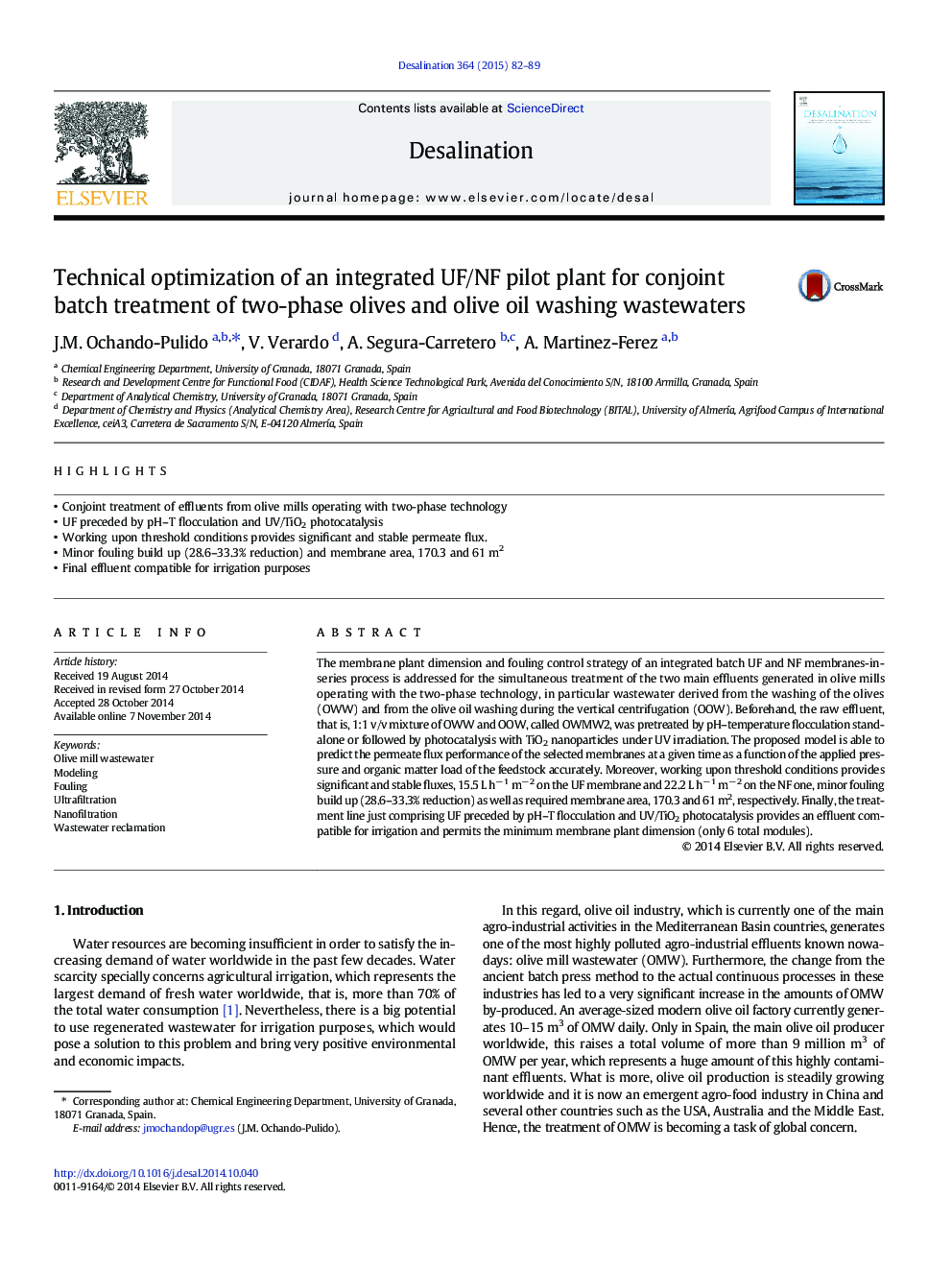| Article ID | Journal | Published Year | Pages | File Type |
|---|---|---|---|---|
| 623138 | Desalination | 2015 | 8 Pages |
•Conjoint treatment of effluents from olive mills operating with two-phase technology•UF preceded by pH–T flocculation and UV/TiO2 photocatalysis•Working upon threshold conditions provides significant and stable permeate flux.•Minor fouling build up (28.6–33.3% reduction) and membrane area, 170.3 and 61 m2•Final effluent compatible for irrigation purposes
The membrane plant dimension and fouling control strategy of an integrated batch UF and NF membranes-in-series process is addressed for the simultaneous treatment of the two main effluents generated in olive mills operating with the two-phase technology, in particular wastewater derived from the washing of the olives (OWW) and from the olive oil washing during the vertical centrifugation (OOW). Beforehand, the raw effluent, that is, 1:1 v/v mixture of OWW and OOW, called OWMW2, was pretreated by pH–temperature flocculation stand-alone or followed by photocatalysis with TiO2 nanoparticles under UV irradiation. The proposed model is able to predict the permeate flux performance of the selected membranes at a given time as a function of the applied pressure and organic matter load of the feedstock accurately. Moreover, working upon threshold conditions provides significant and stable fluxes, 15.5 L h− 1 m− 2 on the UF membrane and 22.2 L h− 1 m− 2 on the NF one, minor fouling build up (28.6–33.3% reduction) as well as required membrane area, 170.3 and 61 m2, respectively. Finally, the treatment line just comprising UF preceded by pH–T flocculation and UV/TiO2 photocatalysis provides an effluent compatible for irrigation and permits the minimum membrane plant dimension (only 6 total modules).
